Introduction
Tesla, the electric vehicle (EV) pioneer founded by Elon Musk, has transformed the automotive industry with its innovative approach to sustainable transportation. Since its inception, Tesla has produced a diverse range of electric vehicles, each pushing the boundaries of EV technology and design. In this comprehensive guide, we’ll take you on a journey through Tesla’s vehicle lineup, from the groundbreaking Roadster to the futuristic Cybertruck.
Tesla, under the visionary leadership of Elon Musk, has ushered in a new era in the automotive industry, one defined by innovation, sustainability, and a relentless pursuit of excellence. From its very inception, Tesla set out to disrupt the status quo, challenging the conventional wisdom that electric vehicles were limited in range, performance, and desirability. As we embark on this journey through Tesla’s remarkable vehicle lineup, we’ll witness how the company has redefined what it means to drive an electric car, pushing the boundaries of technology and design.
Our journey begins with the groundbreaking Roadster, Tesla’s inaugural offering. The Roadster not only defied expectations but shattered them, showcasing the potential of electric vehicles with its thrilling acceleration and impressive range. It was a revelation, proving that electric cars could be both exhilarating and practical. The Roadster’s influence reverberated throughout the automotive industry, sparking a wave of interest in electric mobility.
Moving forward, we encounter the Model S, a sedan that redefined luxury and performance. With its sleek design, impressive range, and cutting-edge technology, the Model S became an aspirational symbol for electric driving. It demonstrated that electric vehicles could not only compete with traditional luxury cars but also outperform them in many respects. The Model S was a game-changer, setting the bar high for the entire automotive industry.
Next in our lineup is the Model X, a crossover SUV that embodies versatility and innovation. With its distinctive falcon-wing doors and spacious interior, the Model X reimagined family-friendly electric vehicles. It combined the practicality of an SUV with the performance and efficiency that Tesla had become known for. The Model X brought electric mobility to a broader audience, appealing to those seeking both style and substance in their vehicles.
Our journey then takes us to the Model 3, a compact sedan designed to make electric driving accessible to the masses. With its more affordable price point, the Model 3 shattered the notion that electric cars were reserved for the elite. It quickly became one of the best-selling electric vehicles globally, democratizing sustainable transportation and accelerating the transition to a greener future.
Lastly, we arrive at the Cybertruck, Tesla’s vision of the future of trucks. This bold and futuristic vehicle challenges conventional notions of what a pickup truck should be. With its stainless-steel exoskeleton and powerful electric drivetrain, the Cybertruck promises to revolutionize the trucking industry, offering a sustainable and high-performance alternative to traditional gas-guzzlers.
In our comprehensive guide, we will delve deep into each of these vehicles, exploring their unique features, technological innovations, and the impact they’ve had on the automotive landscape. We’ll also look ahead to the exciting future that Tesla envisions, one where sustainable transportation is not only a reality but also a thrilling and transformative experience.
As we traverse the terrain of Tesla’s vehicle lineup, we’ll witness the evolution of electric mobility, from its nascent beginnings to a future filled with promise and potential. Tesla’s commitment to innovation, sustainability, and pushing the boundaries of what’s possible has not only transformed the automotive industry but also reshaped the way we envision our future on the road.
For a comprehensive look at this subject, we invite you to read more on this dedicated page: Tesla Sales, Revenue & Production for 2023 (Complete Statistics)
Tesla’s journey began with the Tesla Roadster, introduced in 2008. This sleek, all-electric sports car was a game-changer, proving that EVs could combine thrilling performance with zero emissions. The Roadster boasted a range of over 240 miles on a single charge, dispelling the myth of limited electric range.
As Tesla embarked on its mission to revolutionize the automotive industry, the Roadster was a remarkable starting point. This electric sports car not only shattered preconceptions about the limitations of electric vehicles but also set the stage for Tesla’s future innovations. Its impressive range, acceleration, and design captivated automotive enthusiasts and marked the beginning of Tesla’s journey to electrify transportation.
The Roadster was more than just a sports car; it was a symbol of Tesla’s commitment to sustainability. By proving that electric cars could be high-performance vehicles, Tesla paved the way for the broader adoption of electric mobility. It showcased the potential of EVs to replace traditional gasoline-powered cars, reducing greenhouse gas emissions and curbing our dependence on fossil fuels.
The success of the Roadster provided the momentum and financial foundation for Tesla to embark on even more ambitious projects. It was a testament to the vision of Elon Musk and Tesla’s engineers, demonstrating their ability to push the boundaries of what electric vehicles could achieve.
With the Roadster as the starting point, Tesla set its sights on developing a diverse range of electric vehicles, each tailored to meet different market segments and consumer preferences. This commitment to innovation and sustainability led to the creation of a comprehensive lineup that includes the Model S, Model 3, Model X, Model Y, and the highly anticipated Cybertruck.
In the pages of this article, we will take a closer look at each of these vehicles, exploring their unique features, capabilities, and contributions to Tesla’s mission of accelerating the world’s transition to sustainable energy. From the groundbreaking Model S to the rugged and futuristic Cybertruck, Tesla’s vehicle lineup continues to redefine the automotive industry and drive us toward a more sustainable and electrified future.
Should you desire more in-depth information, it’s available for your perusal on this page: Tesla future product: 2023 kicks off next big cycle | Automotive News

In 2012, Tesla unveiled the Model S, a premium electric sedan that redefined luxury in the automotive world. With striking design, impressive range, and cutting-edge technology, the Model S became a symbol of Tesla’s commitment to excellence.
The year 2012 marked a pivotal moment in the history of electric vehicles and the automotive industry as a whole. It was the year when Tesla unveiled the groundbreaking Model S, a premium electric sedan that sent shockwaves through the automotive world. The Model S was more than just a car; it was a paradigm shift, a revolution on wheels that redefined the very concept of luxury and performance in the electric vehicle (EV) landscape.
One of the most striking aspects of the Model S was its design. Sleek, elegant, and meticulously crafted, it was a visual masterpiece that turned heads wherever it went. Tesla’s commitment to aesthetics and attention to detail were evident in every curve and contour of the vehicle. The absence of a traditional internal combustion engine allowed for a sleek and spacious interior, with a minimalist yet luxurious design that felt like stepping into the future.
However, the Model S was not just a triumph of form; it was also a marvel of function. Its impressive range shattered the preconceived notions of what an electric vehicle could achieve. With various battery options, the Model S could travel distances that were previously reserved for gas-powered cars, alleviating range anxiety and opening up new possibilities for EV owners.
Cutting-edge technology was at the core of the Model S experience. The massive touchscreen interface, which dominated the dashboard, provided an intuitive and immersive control center for both the vehicle’s functions and infotainment. Tesla’s Autopilot technology, though in its infancy at the time, hinted at a future where autonomous driving would become a reality.
Moreover, the Model S showcased Tesla’s commitment to excellence in performance. Its electric drivetrain delivered instant torque, propelling the car from 0 to 60 mph in breathtaking speeds that rivaled many high-performance sports cars. This combination of speed and sustainability was a testament to Tesla’s determination to redefine what a luxury sedan could be.
The Model S became more than just a car; it became a symbol of Tesla’s unwavering dedication to excellence and innovation. It challenged the status quo and shattered preconceived notions about electric vehicles. In doing so, it inspired a new generation of automakers to take electric mobility seriously and pushed the entire industry toward a more sustainable and technologically advanced future.
As the Model S blazed a trail of electrified excellence, it left an indelible mark on the automotive world. It was not just a vehicle; it was a vision, a promise of what the future of transportation could look like. It served as a catalyst for change, propelling the world toward a future where luxury, sustainability, and cutting-edge technology coexist seamlessly, redefining the very essence of automotive excellence.
For additional details, consider exploring the related content available here Tesla’s Original Roadster: Price, Specs and Range of the Vehicle …
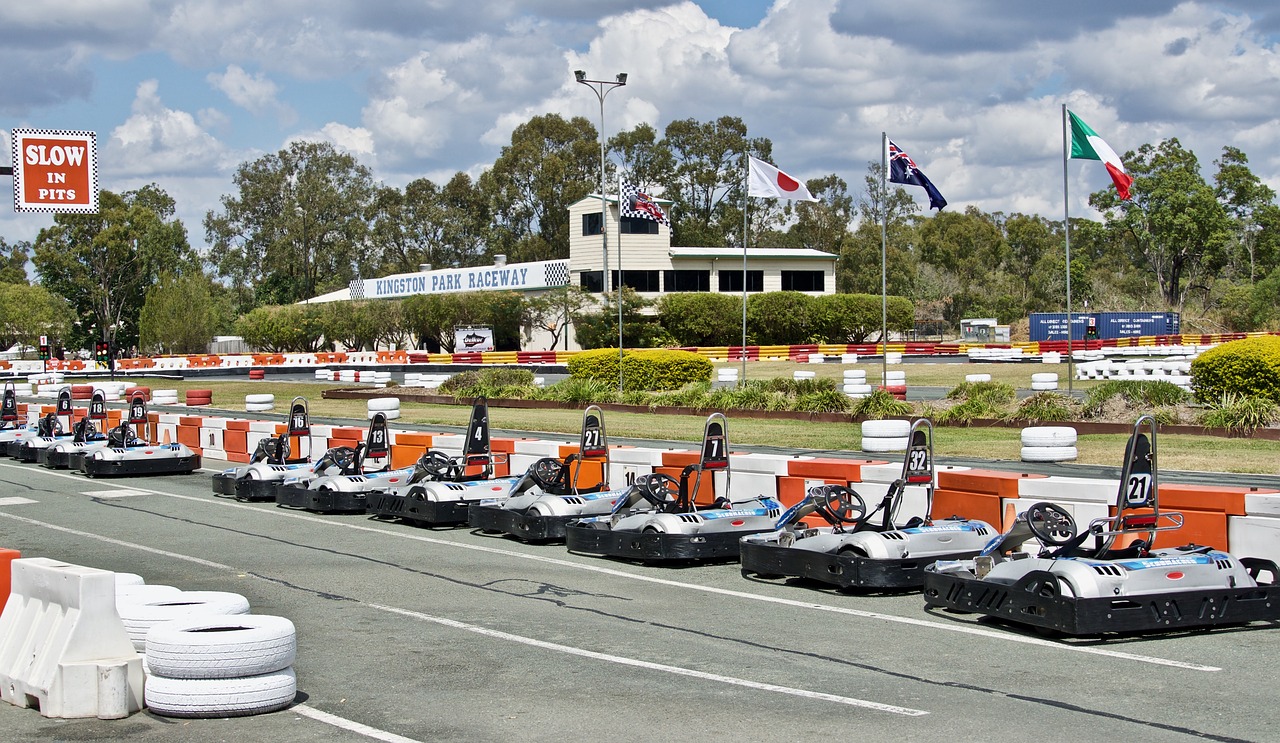
The Model X, Tesla’s first SUV, introduced falcon-wing doors and impressive cargo space to the EV market. Known for its advanced safety features and family-friendly design, the Model X expanded Tesla’s reach and appeal.
Tesla’s foray into the SUV market with the Model X marked a significant milestone in the evolution of electric vehicles (EVs). This groundbreaking model not only introduced unique features but also expanded Tesla’s influence and appeal in the automotive world.
Falcon-Wing Doors: One of the most distinctive and eye-catching features of the Model X was its falcon-wing doors. These innovative doors, hinged at the roof rather than the side, added a touch of futuristic elegance to the SUV. Beyond their aesthetic appeal, falcon-wing doors provided practical advantages. They facilitated easier access to the second and third rows, making it more convenient for passengers, especially those with children or bulky items. This innovation showcased Tesla’s commitment to reimagining the conventional and embracing unconventional yet functional design elements.
Family-Friendly Design: The Model X was meticulously designed with families in mind. Its spacious interior, seating for up to seven passengers, and ample cargo space made it an ideal choice for family adventures. Tesla’s dedication to safety was evident in the Model X’s advanced driver-assistance features, which provided an additional layer of security for passengers. This family-friendly approach not only broadened Tesla’s customer base but also aligned with the growing demand for practical and eco-conscious family vehicles.
Advanced Safety Features: Safety has always been a paramount concern for Tesla, and the Model X was no exception. It came equipped with an array of advanced safety features, including Tesla’s Autopilot system, which offered features like adaptive cruise control and automated lane-keeping. The Model X’s cutting-edge safety technologies not only enhanced the driving experience but also set new industry standards for safety in EVs.
Expanding Tesla’s Reach: The introduction of the Model X represented Tesla’s strategic move to expand its product lineup beyond the Model S sedan. This expansion was pivotal in attracting a wider range of consumers, including those who preferred the utility and versatility of an SUV. As a result, Tesla’s market presence and appeal grew, solidifying its position as a major player in the EV market.
Challenges and Evolution: While the Model X showcased Tesla’s innovation and ambition, it was not without challenges. The complex design of the falcon-wing doors initially faced production issues, which Tesla diligently worked to overcome. Over time, as Tesla refined its manufacturing processes, the Model X became a testament to the company’s adaptability and commitment to continuous improvement.
In conclusion, the Model X was a remarkable addition to Tesla’s lineup, embodying the company’s ethos of innovation, sustainability, and safety. Its distinctive features, family-friendly design, and advanced technologies expanded Tesla’s reach and solidified its status as a leader in the EV industry. The Model X not only introduced new possibilities in EV design but also played a pivotal role in shaping the perception of electric vehicles as practical, stylish, and environmentally responsible choices for a wide range of consumers.
To expand your knowledge on this subject, make sure to read on at this location: Tesla future product: 2023 kicks off next big cycle | Automotive News

The Model 3, launched in 2017, marked Tesla’s foray into affordable electric mobility. With its more accessible price point, this compact sedan became a best-seller and played a pivotal role in making EVs mainstream.
The release of the Model 3 in 2017 was a watershed moment for Tesla and the electric vehicle industry as a whole. With its introduction, Tesla embarked on a mission to bring affordable electric mobility to the masses. This compact sedan was a game-changer, not just for the company but for the entire automotive landscape.
At its core, the Model 3 was designed to democratize electric transportation. Prior to its arrival, electric vehicles were often seen as a luxury reserved for the privileged few due to their high price tags. Tesla’s Model 3 shattered that perception by offering a vehicle that combined cutting-edge technology, exceptional range, and the brand’s signature style at a price point that was within reach for a much broader segment of consumers.
The Model 3’s affordability was a result of Tesla’s relentless commitment to cost reduction and efficiency. Through innovations in battery technology, streamlined production processes, and economies of scale, Tesla was able to bring down the price barrier without compromising on quality or performance.
The impact of the Model 3 was nothing short of transformative. It not only accelerated the adoption of electric vehicles but also reshaped the automotive industry’s landscape. The car’s popularity was palpable, with long waiting lists and fervent enthusiasm from early adopters. The Model 3’s success was a testament to the fact that electric vehicles could not only match but surpass the driving experience of traditional gas-powered cars.
Furthermore, the Model 3 played a pivotal role in making electric vehicles mainstream. It was a symbol of the electric vehicle revolution reaching the masses, and it spurred other automakers to invest heavily in electric vehicle development. As a result, the automotive industry witnessed a seismic shift towards electrification, with numerous manufacturers announcing their own electric models and strategies.
Beyond its impact on the automotive industry, the Model 3 ushered in a new era of sustainable transportation. It contributed to reducing greenhouse gas emissions and lowering the overall environmental footprint of personal mobility. By making electric vehicles more accessible, it encouraged more people to consider cleaner and more sustainable transportation options, aligning with the global push towards reducing carbon emissions and combating climate change.
In conclusion, the launch of the Model 3 in 2017 was a pivotal moment in Tesla’s journey and the broader transition to electric mobility. It made affordable electric vehicles a reality, reshaped the automotive industry, and played a significant role in driving the adoption of sustainable transportation. The Model 3 is not just a car; it is a symbol of progress, innovation, and the promise of a greener future for all.
For a comprehensive look at this subject, we invite you to read more on this dedicated page: Tesla Gallery | Tesla
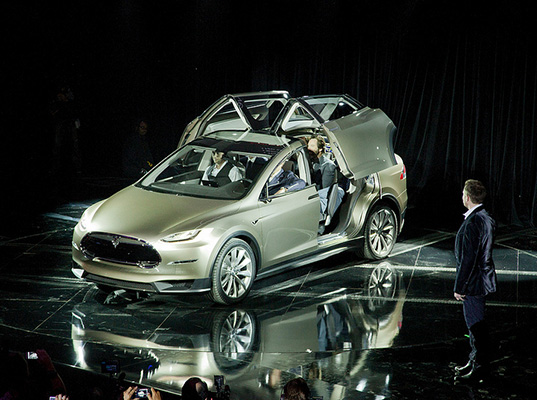
Building on the success of the Model 3, Tesla introduced the Model Y in 2020. This compact SUV retained the Model 3’s affordability while offering increased space and versatility, meeting the growing demand for electric crossovers.
The introduction of the Tesla Model Y in 2020 marked a pivotal moment in the company’s journey toward making electric vehicles more accessible and versatile. Building on the resounding success of the Model 3, Tesla strategically expanded its lineup to cater to a broader audience and address the shifting preferences of consumers.
The Model Y, positioned as a compact SUV, seamlessly inherited the affordability and efficiency of its predecessor, the Model 3. This strategic move allowed Tesla to retain its competitive edge in terms of price point, ensuring that electric mobility remained within reach for a wider spectrum of consumers. In doing so, Tesla continued to make strides in its mission to accelerate the world’s transition to sustainable energy by offering an electric vehicle that appealed to a more budget-conscious market segment.
However, the Model Y offered more than just affordability; it introduced a new level of versatility to the Tesla lineup. With its SUV form factor, the Model Y catered to the growing demand for crossovers, a segment that had been steadily gaining popularity among consumers worldwide. This shift reflected the evolving needs and preferences of car buyers who sought the spaciousness, higher driving position, and cargo capacity that crossovers typically provide.
Tesla’s strategic decision to enter the compact SUV market with the Model Y was met with enthusiasm from both existing Tesla enthusiasts and newcomers to the brand. The vehicle’s crossover design retained the sleek and minimalist aesthetic that had become synonymous with Tesla, while also offering an expanded interior space that accommodated families, outdoor enthusiasts, and those with active lifestyles.
Moreover, the Model Y continued Tesla’s tradition of innovation, featuring advancements in electric vehicle technology, including enhanced range, autonomous driving capabilities, and over-the-air updates that constantly improved the vehicle’s performance and features. This commitment to innovation ensured that the Model Y not only met but often exceeded the expectations of its owners.
In conclusion, the introduction of the Tesla Model Y in 2020 was not just an expansion of the company’s product lineup; it was a strategic move to cater to evolving consumer preferences and to make electric vehicles more accessible to a wider audience. By combining affordability, versatility, and innovation, Tesla reaffirmed its commitment to revolutionizing the automotive industry and accelerating the global transition to sustainable transportation. The Model Y served as a compelling example of Tesla’s ability to adapt to changing market dynamics while staying true to its mission of creating a more sustainable and electric future.
Don’t stop here; you can continue your exploration by following this link for more details: Tesla asks Cybertruck reservation holders to lease S3XY lineup for …
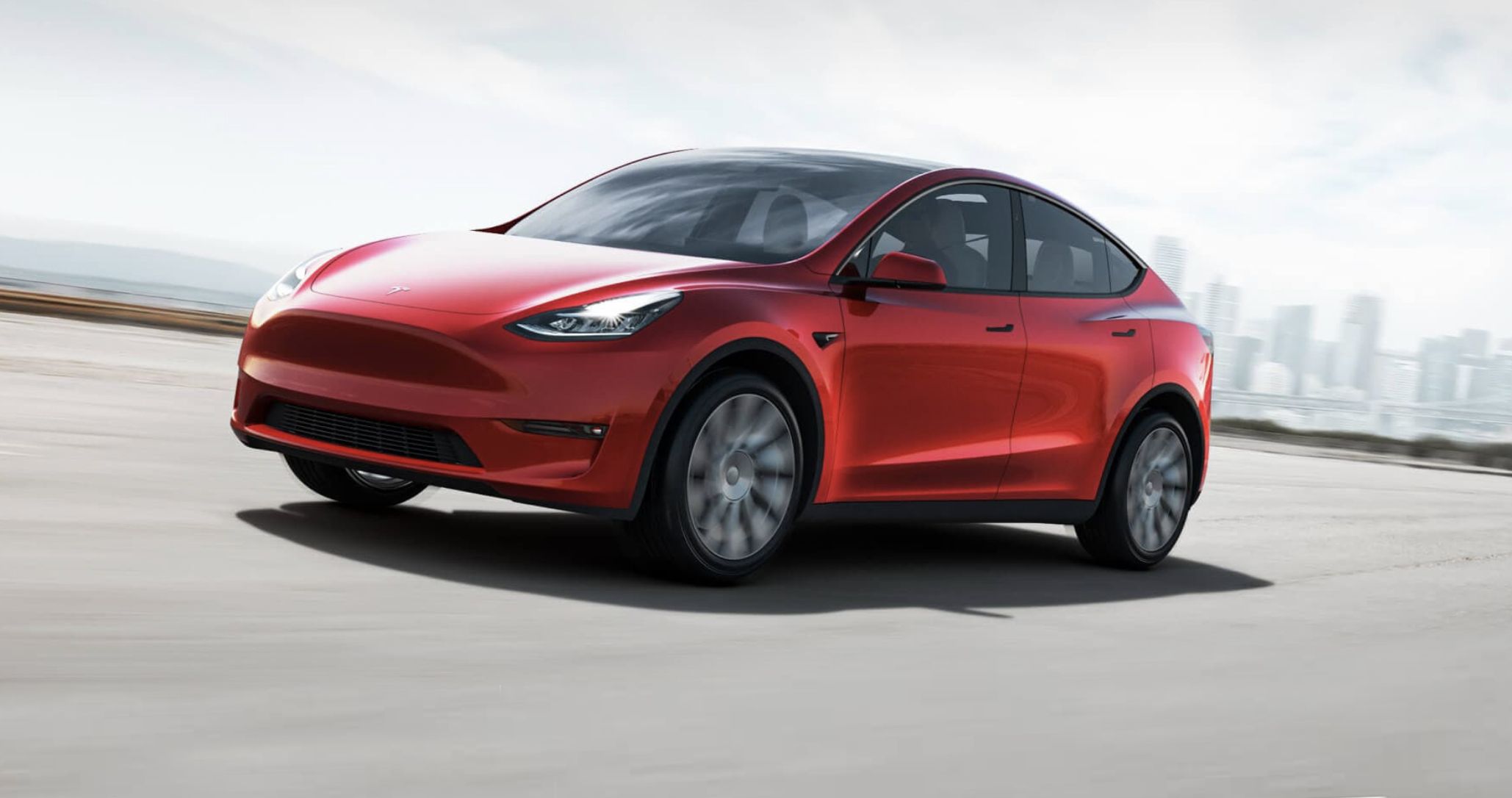
Tesla’s Cybertruck, announced in 2019, is a departure from conventional truck design. With its stainless steel exoskeleton and futuristic aesthetics, the Cybertruck is set to redefine the pickup truck segment. Anticipated features include impressive range and off-road capabilities.
Tesla’s Cybertruck, unveiled in 2019, represents a bold leap into the future of automotive design and utility. In a market saturated with traditional truck offerings, the Cybertruck emerges as a disruptive force, challenging established norms and preconceptions.
One of its most visually striking aspects is its stainless steel exoskeleton. Unlike the familiar sight of painted metal or plastic body panels, the Cybertruck proudly flaunts its rugged stainless steel exterior. This not only promises enhanced durability but also lends it an unmistakably futuristic appearance. It’s as if the truck has been plucked from the pages of a science fiction novel and placed squarely on our streets.
The Cybertruck’s aesthetic departure is more than just skin-deep; it extends to its fundamental architecture. This all-electric pickup is built upon Tesla’s advanced platform, promising a combination of power and efficiency that is unparalleled in its class. Early indications point to an impressive range, enabling long-distance travel without the need for frequent charging stops. Moreover, its off-road capabilities are expected to be nothing short of exceptional, making it equally at home on rugged terrain as it is on city streets.
Beyond its striking appearance and formidable performance, the Cybertruck is a symbol of Tesla’s commitment to pushing the boundaries of what’s possible in the automotive world. It’s a reflection of a future where sustainability, utility, and innovation converge. As it inches closer to production, the anticipation surrounding the Cybertruck continues to build, hinting at a revolution not just in pickup trucks but in the broader landscape of personal transportation. Tesla’s vision, embodied in the Cybertruck, is poised to reshape our expectations and redefine what a truck can be.
To expand your knowledge on this subject, make sure to read on at this location: Lessons from Tesla’s Approach to Innovation
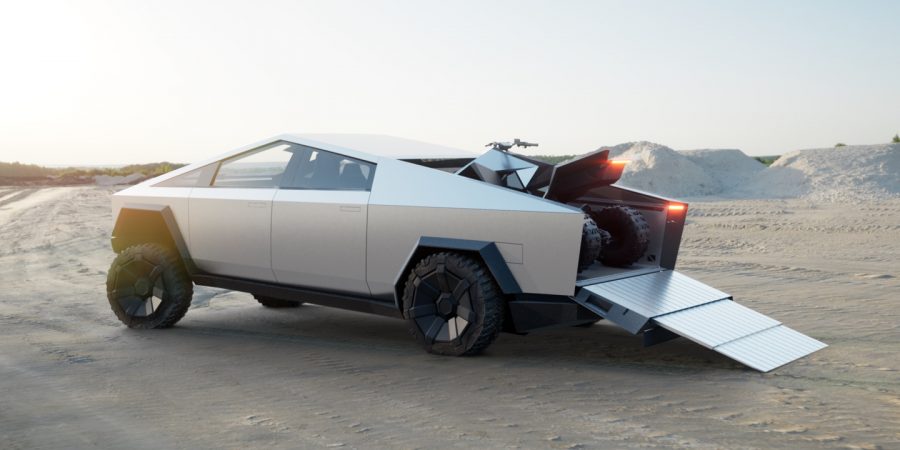
Beyond the existing lineup, Tesla has ambitious plans for the future. The upcoming Tesla Semi promises to revolutionize the trucking industry with its electric powertrain, while the Model S Plaid showcases Tesla’s commitment to pushing the limits of EV performance.
As Tesla continues to make waves in the automotive industry, it’s clear that the company’s vision extends beyond its existing lineup. Elon Musk and his team have always been driven by innovation and a commitment to pushing the boundaries of what electric vehicles can achieve. The future of Tesla holds exciting prospects that will further redefine the transportation landscape.
One of the most eagerly anticipated additions to Tesla’s portfolio is the Tesla Semi. This all-electric Class 8 semi-truck is poised to revolutionize the freight industry. By transitioning long-haul trucking to electric power, the Tesla Semi aims to reduce emissions and operating costs significantly. With a focus on both performance and efficiency, the Tesla Semi promises to deliver impressive range and acceleration, setting new standards for the trucking industry. As businesses seek more sustainable and cost-effective transportation solutions, the Tesla Semi is positioned to play a pivotal role in transforming freight logistics.
In addition to its workhorse capabilities, Tesla is also pushing the boundaries of electric vehicle performance with the Model S Plaid. This high-performance variant of the Model S is designed to offer exhilarating acceleration and track-worthy handling. With three electric motors and an astonishing 1,020 horsepower, the Model S Plaid showcases Tesla’s commitment to demonstrating that electric cars can outperform their internal combustion counterparts in every aspect, including speed and handling. It’s a testament to the company’s dedication to breaking records and redefining what electric vehicles can achieve on the road.
Beyond these two exciting developments, Tesla’s future likely holds even more surprises. Elon Musk has hinted at projects like a compact electric car for urban environments and advanced battery technologies that could further enhance the capabilities of Tesla vehicles. As the electric vehicle landscape continues to evolve, Tesla remains at the forefront, driving innovation, sustainability, and performance to new heights.
In this comprehensive guide, we’ll explore each vehicle in Tesla’s current lineup, providing an in-depth look at their features, technologies, and contributions to the electric vehicle revolution. We’ll also delve into what the future may hold for Tesla, as the company works tirelessly to accelerate the transition to sustainable energy and transportation worldwide. From the Model S to the upcoming Tesla Semi, Tesla’s journey is a testament to the power of innovation and the promise of a sustainable, electrified future.
Should you desire more in-depth information, it’s available for your perusal on this page: Supercharger Support | Tesla
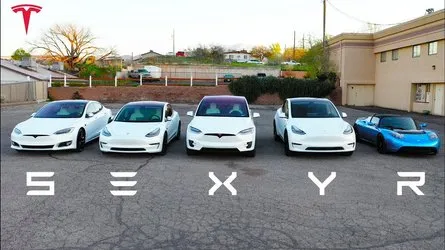
Conclusion
Tesla’s vehicle lineup represents a journey of innovation, sustainability, and reimagining transportation. From the Roadster’s breakthrough to the anticipation surrounding the Cybertruck, Tesla continues to shape the future of electric mobility. As Tesla’s mission to accelerate the world’s transition to sustainable energy progresses, their diverse and groundbreaking vehicle lineup remains at the forefront of the EV revolution.
Tesla’s vehicle lineup isn’t just a collection of cars; it’s a journey of relentless innovation, a testament to sustainability, and a bold reimagination of transportation itself. From the Roadster’s groundbreaking debut to the anticipation surrounding the futuristic Cybertruck, Tesla’s product offerings have been driving the evolution of electric mobility, and they show no signs of slowing down. As Tesla’s mission to accelerate the world’s transition to sustainable energy continues to gain momentum, their diverse and groundbreaking vehicle lineup remains firmly at the forefront of the electric vehicle (EV) revolution.
Pioneering the Roadster Revolution
Tesla’s journey began with the Roadster, a sports car that challenged the notion that electric vehicles could only be practical but not exhilarating. The Roadster not only shattered stereotypes but also laid the foundation for Tesla’s commitment to performance, style, and sustainability. It showed the world that EVs could be both thrilling to drive and environmentally responsible.
Sculpting the Model S and Model X
Tesla then introduced the Model S and Model X, two vehicles that redefined luxury and practicality in the EV segment. The Model S, with its sleek design and impressive range, showcased the potential for long-distance electric travel without sacrificing comfort or style. The Model X, with its distinctive falcon-wing doors, added a touch of innovation to the SUV market while maintaining Tesla’s commitment to sustainability.
The Model 3 Revolution
Tesla’s impact on electric mobility truly skyrocketed with the introduction of the Model 3. This compact yet versatile sedan brought the allure of Tesla to a wider audience. With its affordable price point and impressive range, the Model 3 shattered barriers to EV ownership, making sustainable transportation more accessible than ever before. It became a symbol of Tesla’s mission to democratize electric vehicles.
The Advent of Model Y and Cybertruck Hype
Tesla’s lineup expanded further with the Model Y, a compact SUV that combines versatility with the performance that Tesla is known for. It’s designed to meet the growing demand for SUVs while maintaining the company’s dedication to sustainability and innovation.
The anticipation surrounding the Cybertruck exemplifies Tesla’s pioneering spirit. This all-electric pickup truck has captured the imagination of consumers and industry observers alike with its futuristic design and promising features. It represents Tesla’s ambition to disrupt not only the passenger car market but also the realm of utility vehicles.
Sustainable Energy, Sustainable Future
Beyond individual vehicle models, Tesla’s overarching mission remains clear: to accelerate the world’s transition to sustainable energy. Each Tesla vehicle, whether it’s a sports car, sedan, SUV, or pickup truck, is a piece of this larger puzzle. As Tesla’s Supercharger Network expands, its solar and energy storage solutions gain traction, and its commitment to sustainability deepens, the company is not just selling cars; it’s driving a movement towards a more sustainable and electric future.
In conclusion, Tesla’s vehicle lineup is a reflection of its ongoing commitment to innovation, sustainability, and reimagining transportation. From the Roadster that kickstarted the EV revolution to the eagerly anticipated Cybertruck, Tesla’s diverse and groundbreaking vehicles continue to shape the future of electric mobility. As Tesla’s mission to accelerate the transition to sustainable energy gains momentum, its impact on the automotive industry and the world’s transportation landscape is undeniable.
You can also read more about this here: News | Tesla
More links
To expand your knowledge on this subject, make sure to read on at this location: Tesla Gallery | Tesla
